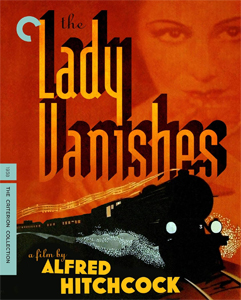Four years after Agatha Christie’s “Murder on the Orient Express” chronicled a mystery on a snowed-in train in Eastern Europe, Afred Hitchcock did the same in “The Lady Vanishes” (1938), adapting the 1936 novel by Ethel Lina White. Although 28 of Hitchcock’s 52 full-length movies come from novels or short stories, and although their careers almost precisely overlapped, the Master of Suspense never adapted a work by the Queen of Crime.
Still, moviegoers at the time might’ve expected an intriguing mystery, like I did. That’s only part of “The Lady Vanishes,” which is a tale of three acts. The first is arguably unnecessary and the third is a rote conclusion, but the middle section comes close to what I climbed aboard for. Iris (Margaret Lockwood), traveling home to England to marry her off-screen fiancé, befriends kindly Miss Froy (May Whitty). But Iris has been knocked on the head and her fellow passengers insist Miss Froy doesn’t exist.
As the train gets moving, Hitchcock likewise gets steady mileage out of this premise. Iris has one ally, Gilbert (Michael Redgrave), initially an annoying cad who barges into her room at the hotel in the small town where the train is snowed in.

“The Lady Vanishes” (1938)
Director: Alfred Hitchcock
Writers: Sidney Gilliat, Frank Launder (screenplay), Ethel Lina White (novel)
Stars: Margaret Lockwood, Michael Redgrave, Paul Lukas
Today, such behavior would be grounds for a breaking-and-entering arrest; in the story, it’s merely rakishness. This is one of those story-long meet-cutes – wherein they’ll live happily ever after on the last page – that Christie often dabbled in.
Missing Miss Froy
While Iris’ initial annoyance with Gilbert certainly thaws, their bond is on the page (as Sidney Galliat and Frank Launder adapt White’s novel) more so than via a strong spark between Lockwood and Redgrave, although both characters are likable enough. Adding an important spice is another ally, quirky and famous brain surgeon Dr. Hartz (Paul Lukas), who picks up a head-bandaged patient at one of the stops.
“The Lady Vanishes” is propped up on the question of “What happened to Miss Froy?” — with a brief secondary question of whether Iris imagined her existence. The lady disappears at about the 30-minute mark, and the big answer comes with about 30 minutes left in the 96-minute film. That middle chunk is good as everything and everyone conspires against clear answers for Iris and Gilbert.
For example, traveling companions Caldicott and Charters (Naunton Wayne and Basil Radford) want to get back to England to see a big cricket match. They think a mystery of a missing woman will slow them down, so they take the path of least resistance and say they never saw her.
“The Lady Vanishes” is technically a story of intrigue, but surprisingly it’s actually a light comedy. Hitchcock hits us with farce and gags in that first half-hour in the crowded hotel. Perhaps it was funnier in the 1930s, with humor coming from language barriers, modesty about sharing rooms, and the way the proprietor (Emile Boreo) favors three beautiful and entitled young women (Iris and her friends).

Romp on the rails
Although it’s part of the purposely chaotic set-up, I found Caldicott’s and Charters’ inability to get food (the hotel is all out, as per the snowed-in tracks) to be more troublesome than amusing. It sounds like a nightmare not knowing when you’ll get your next meal. At least the story – and train — moves on from that fairly quickly.
The lightness never turns particularly dark, even when the film racks up a bodycount (but with little blood during this censorious time in British filmmaking). Amid a shootout where Iris, Gilbert and allies are pinned on a stopped train car, they continue to speak in proper British between flying bullets.
Like us, they don’t know who is shooting back at them – or why. Again, this might be something lost to time, as Hitchcock made this film during a period of looming conflict between Western and Eastern Europe. It was perhaps daring, perhaps a relief, to make fun of spy games.
“The Lady Vanishes” ranks high on some fans’ Hitchcock lists, lower on others, and I side with the latter group. The premise provides an instant hook and the middle act handles it with verve. But the opening act is flat; despite attempts at farcical comedy, I wasn’t smiling.
While the conclusion gets by on forward momentum – and one thrilling-for-the-time sequence of Gilbert switching train cars by climbing from one window to another, as a parallel train whips past — it’s purposely undetailed spy stuff. Considering the evocative title, I found my interest in the story vanishing faster than I expected.
RFMC’s Alfred Hitchcock series reviews works by the Master of Suspense, plus remakes and source material. Click here to visit our Hitchcock Zone.

